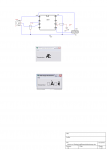N2400 I have not tested but do certainly do.
basic program was original in liberty but I have converted to. just basic.
' USB Thermometer
' ver 0.4 Richard De Pooter
'
'
'
com$="Com3" 'make XX = your com port number
' Open the serial port
print "Opening serial port..."
open com$; ":2400,n,8,1,ds0,cs0,rs" for random as #commPort
'
' GUI PART
'
' Do not print the main window
nomainwin
[setup.main.Window]
'-----Begin code for #main
WindowWidth = 250
WindowHeight = 150
UpperLeftX=int((DisplayWidth-WindowWidth)/2)
UpperLeftY=int((DisplayHeight-WindowHeight)/2)
'-----Begin GUI objects code
statictext #main.statictext1, "Temperatuur:", 5, 52, 81, 20
statictext #main.statictext2, "00.00", 95, 17, 130, 65
'-----End GUI objects code
'-----Begin menu code
menu #main, "Help",_
"About", [About],_
"Exit" , [UserQuit]
'-----End menu code
open "USB Temperatuurmeter" for window_nf as #main
print #main, "font ms_sans_serif 10"
print #main.statictext2, "!font century_gothic 36 bold"
' Trap user's quit action
print #main, "trapclose [UserQuit]";
' Set the timer to reald the serial port
timer 500, [ReadSerial]
' Wait for user actions
[UserWait]
print "Wachten op data..."
wait
'
' User Actions part
[ReadSerial]
' Check serial buffer
if lof (#commPort) > 5 then
' We have something in the buffer - check it out
print "Haal data in buffer"
Response$ = input$ (#commPort, 7)
print "Haal Data: "; Response$
' Update the StaticText
print #main.statictext2, Response$
end if
' Wait again...
wait
[About]
' Print some info about the program
notice "Over" + chr$(13) + "USB Temperatuurmeter v0.4" + chr$(13) + "Copyright 2012, door Richard De Pooter"
wait
[UserQuit]
' Exit the application
confirm "Bent u zeker?"; answer$
if answer$ = "no" then wait
close #commPort
close #main
end


